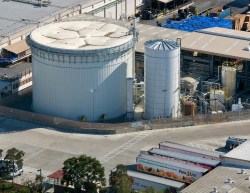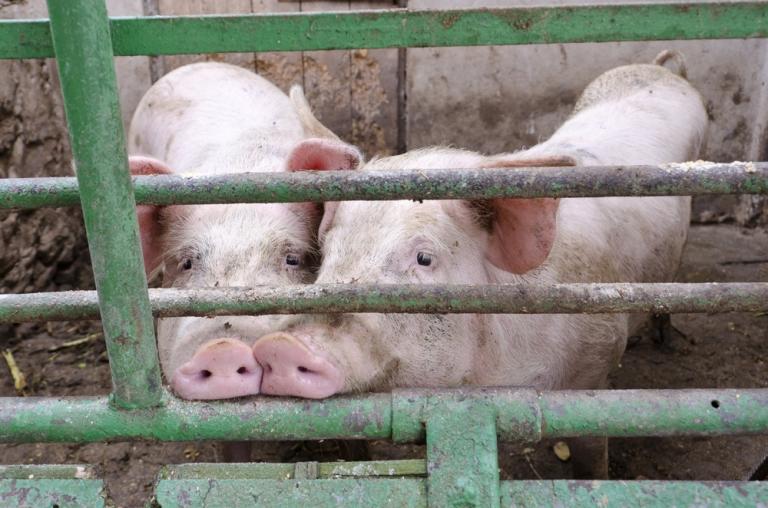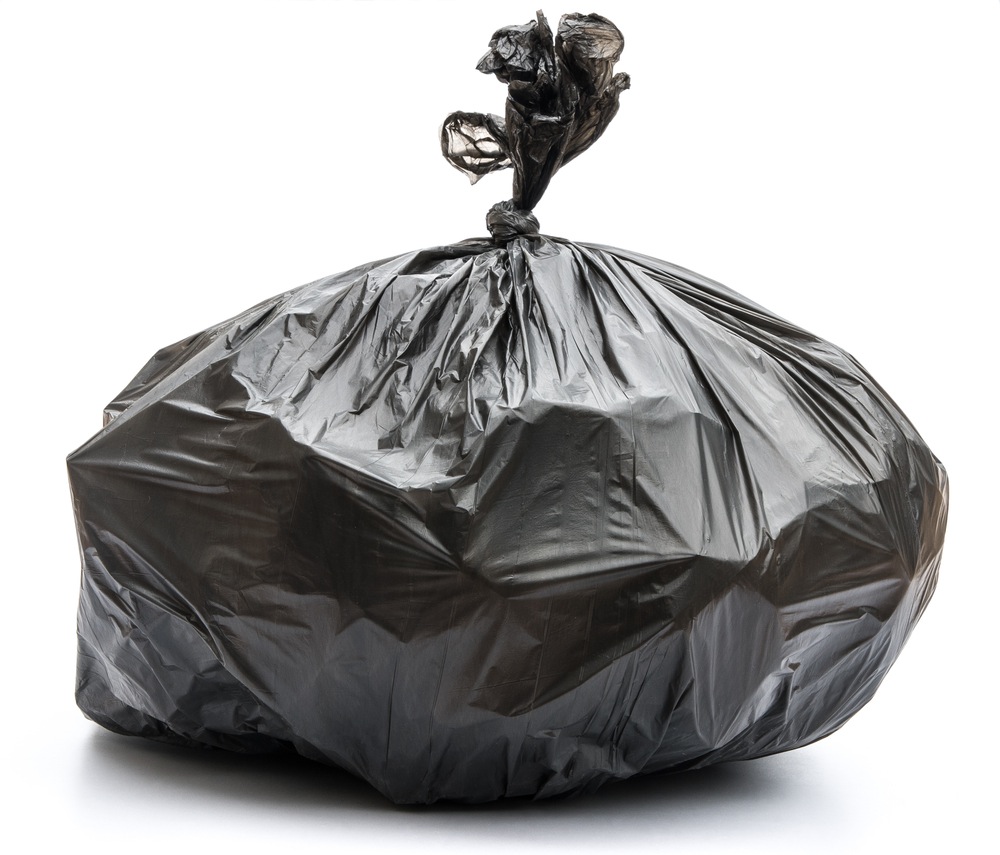
Kroger Co.Wasted food is digested here.
One California food company has a novel plan for dealing with food waste and cutting down the power bill: Feed it to bacteria. The Kroger Co. plans to chuck all food gone past its sell-by date into an industrial silo, where microbes will break it down to release methane. That methane will in turn be burned to generate electricity.
Kroger’s new food-to-energy plant is designed to make the most of the vast amount of food that spoils before it can be sold to customers, while reducing the company’s electricity bills. Sludge left over from the new energy plant will be used as agricultural compost. The L.A. Times describes the operation, which was built in a Compton, Calif., distribution center that serves hundreds of Ralphs and Food 4 Less stores:
Several chest-high trash bins containing a feast of limp waffles, wilting flowers, bruised mangoes and plastic-wrapped steak sat in an airy space laced with piping. Stores send food unable to be donated or sold to the facility, where it is dumped into a massive grinder — cardboard and plastic packaging included.
After being pulverized, the mass is sent to a pulping machine, which filters out inorganic materials such as glass and metal and mixes in hot wastewater from a nearby dairy creamery to create a sludgy substance.
Mike Vriens, Ralphs vice president of industrial engineering, describes the goop as a “juicy milkshake” of trash.
From there, the mulch is piped into a 250,000-gallon staging tank before being steadily fed into a 2-million-gallon silo. The contraption essentially functions as a multi-story stomach.
Inside, devoid of oxygen, bacteria munch away on the liquid refuse, naturally converting it into methane gas. The gas, which floats to the top of the tank, is siphoned out to power three on-site turbine engines.
The amount of food that we waste is enough to cause indigestion. With this system in place, the anaerobic digestion of some of the rotting waste will happen in a controlled facility, instead of moldering in a landfill somewhere, where released gases will warm up the globe even more.



